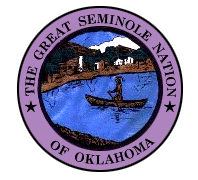

Rewahle Band
![]()
The history of this Upper Creek town dates before the arrival of the Spanish explorer, Hernando DeSoto in the early 1500's.
Horrewahle, as they were originally called, means to "Divide War" or "War Dividers", was the oldest Red Stick or war town in the Mvskokee Confederacy. They had the right to formally declare war on their enemies, and are the Creek speaking faction of the Mvskokee and Seminole tribes.
Situated for centuries on the Tallapoosa River in present day Elmore County, Alabama, Horrewahle was one of the larger towns with several daughter towns that formed at different times throughout their history. These are the Atvsee, Fus-hvtce, Kvlvme, Kvn-hvtke and Rop-Rakko tribal towns. Some of the population also included members from the ancient town of Coosa.
After the massacre at Horseshoe Bend in 1814, Rewahle moved with other Red Stick Creeks to Florida and found refuge with their kinsmen, the Seminole, other members of the Creek faction were removed to Indian Territory along with the Creeks.
During the start of the Second Seminole War in 1835, the Rewahle, Efvlv, Kvn-hvkte, and Fus-hvtce were all living in the same vicinity near what is now Tampa Bay, Florida.
Rewahle Band Chief, Kowa Rakko and his band of 407 people boarded a steamboat at Ft. Brooke on April 12, 1836, to take them through the Gulf of Mexico, up the Mississippi and then to the Arkansas River. Other Seminole Bands included the Fus-hvtce, Kvn-hvyke, Oktaha and most of the Oceese members. They arrived in New Orleans on April 23rd and reached Little Rock, Arkansas on May 5th with 382 members. Two days later, they embarked on the steamship 'Compromise', and arrived ashore at McLeans's Bottom, a few miles below Ft. Smith. Once there, Lt. Meade procured wagons to take them overland to their destination in the Indian Territory.
These Seminole eventually settled along the south Canadian River near their kinsmen, the Creeks. Their ancient ceremonial fire that was carried in a horn from Florida, was rekindled again after settling in their assigned regions. They continued to make large gardens of corn, pumpkin, beans and squash. These gardens were often as large as seven miles wide and eleven miles long. They continued to hunt wild game and gather nuts and berries.
By February of 1845, Rewahle and the rest of the Seminoles migrated west on the south Canadian River in the extreme southern part of Seminole county. Rewahle and members of other towns like the Coosa and Kvn-hvtke, merged back into the large town that it once was, where some soon lost the identity of their original tribal town affiliation.
In the 1980's, the Rewahle ceremonial fire was extinguished and the ground remains dormant today. Some of the members still attend the Posketa, or Green Corn ceremony at other active ceremonial grounds and others attend Indian Baptist Churches.
Once a most populated town, the Seminole Rewahle Etvlwv remain the smallest of the bands today.
-courtesy Pare Bowlegs
©2001-2004 Linda Simpson
![]()
02 August 2015